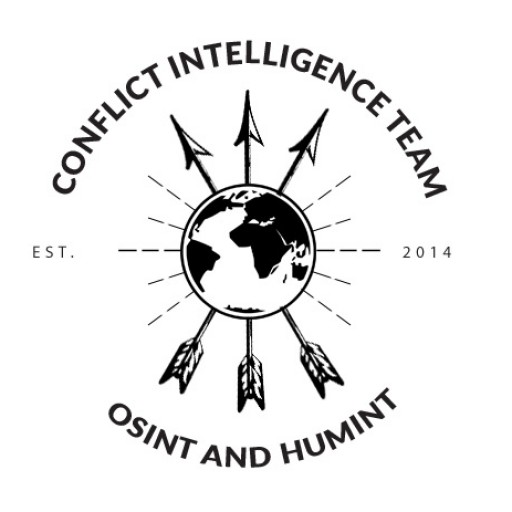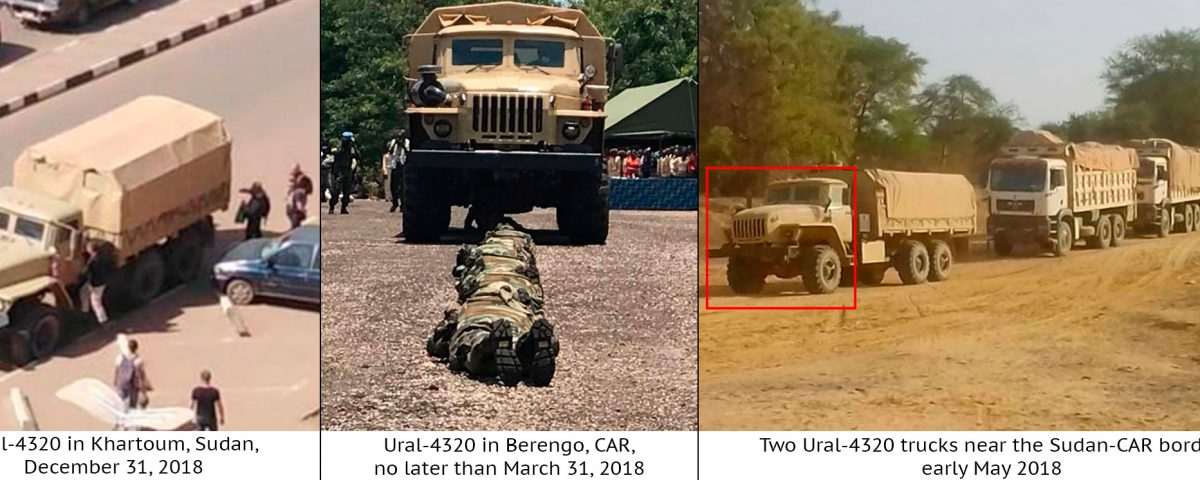This post is also available in:
 Русский
Русский
In late December 2018, photos appeared on social media suggesting Russian kremlin-linked “Wagner PMC” mercenaries were present in Sudan’s cities. Around the same time, Sudan saw a wave of anti-government protests caused by fuel and groceries price hikes. According to the protesters, Sudan’s National Intelligence and Security Service (NISS) used tear gas and firearms to supress the protests, killing dozens of people.
Jonathan Hutson, the director of Washington-based human rights watchdog “Global Media Max” which monitors the events in Sudan, described the situation in a Twitter thread. He noted that on December 26 local activists noticed a sand-colored truck passing through the city. In the truck there were European-looking people in green camo, who were speaking Russian.
The truck was photographed on the same day in the western part of Khartoum, the capital of Sudan, near an Aman Petroleum gas station (thanks to Christiaan Triebert for geolocation):
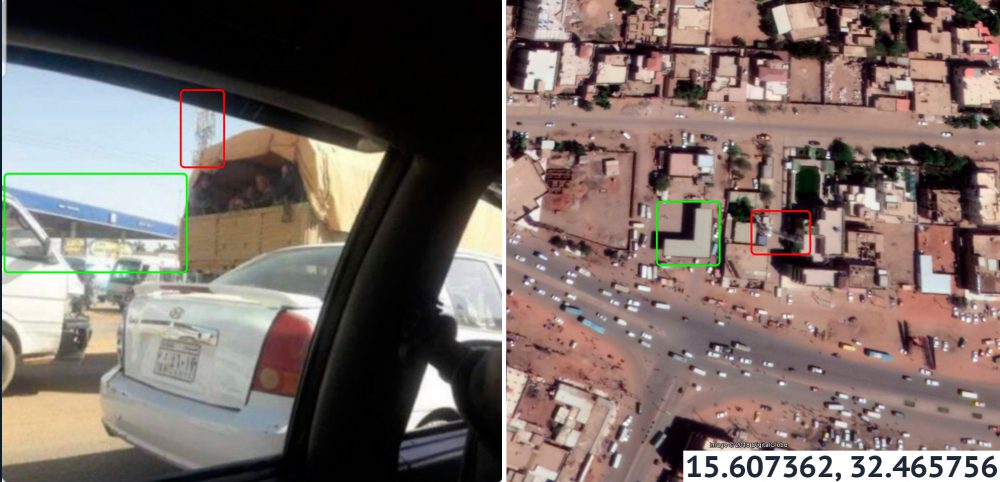
On a mass protest day, December 31 2018, some observers saw an identical truck inside Khartoum. It stopped not far from the protest site, and a group of young European-looking men in civilian clothes emerged from it. Some of them had small cameras. However, those people did not have “Press” vests or larger TV cameras. They also were not watched by NISS agents, as is often the case with foreigners near mass demonstration sites. The group went on foot to the square where the protest was taking place. The parked Ural truck and the group of people were photographed by two different people at the same time from different angles. Both photos can be geolocated near Al-Waha shopping mall.
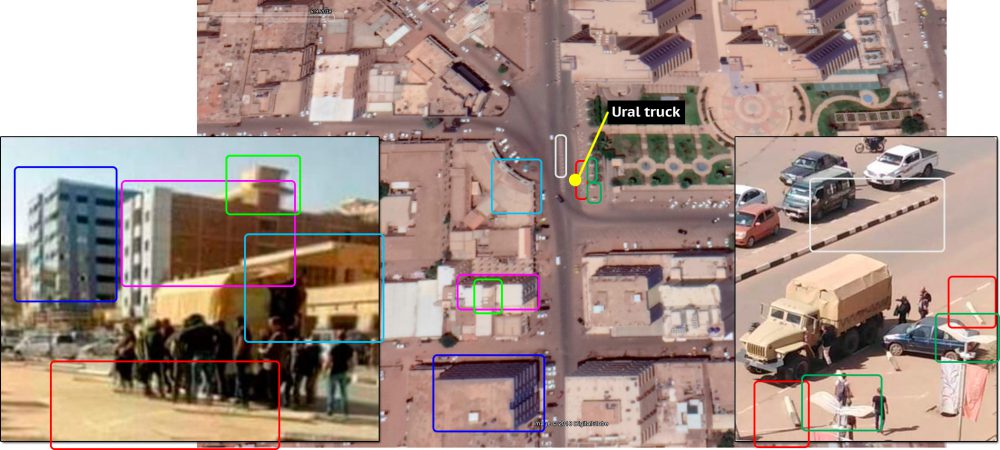
The protests’ site can be verified by videos and photos filmed by activists, for example, by this video from one of the protesters. At 0:24, we see the building of the “Sudanese Hearing Center”, which is located in Khartoum at Sayed Abdul Rahman Avenue:
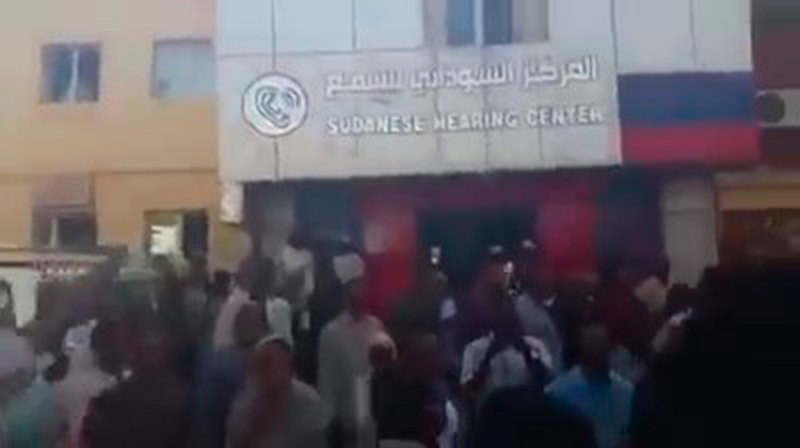
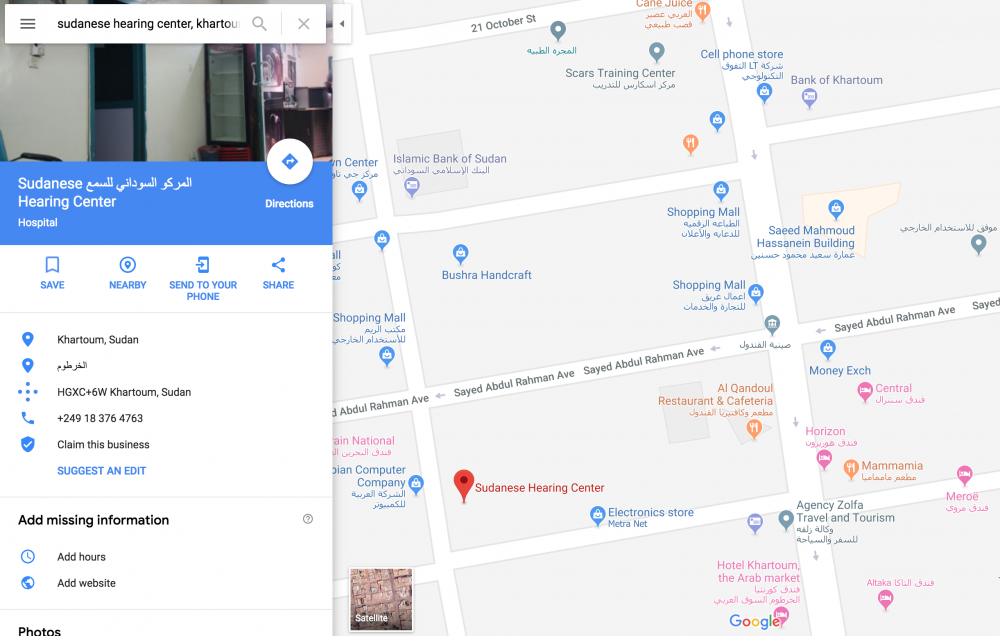
The geolocation shows that the Ural truck was parked around 400 meters from the protest site.
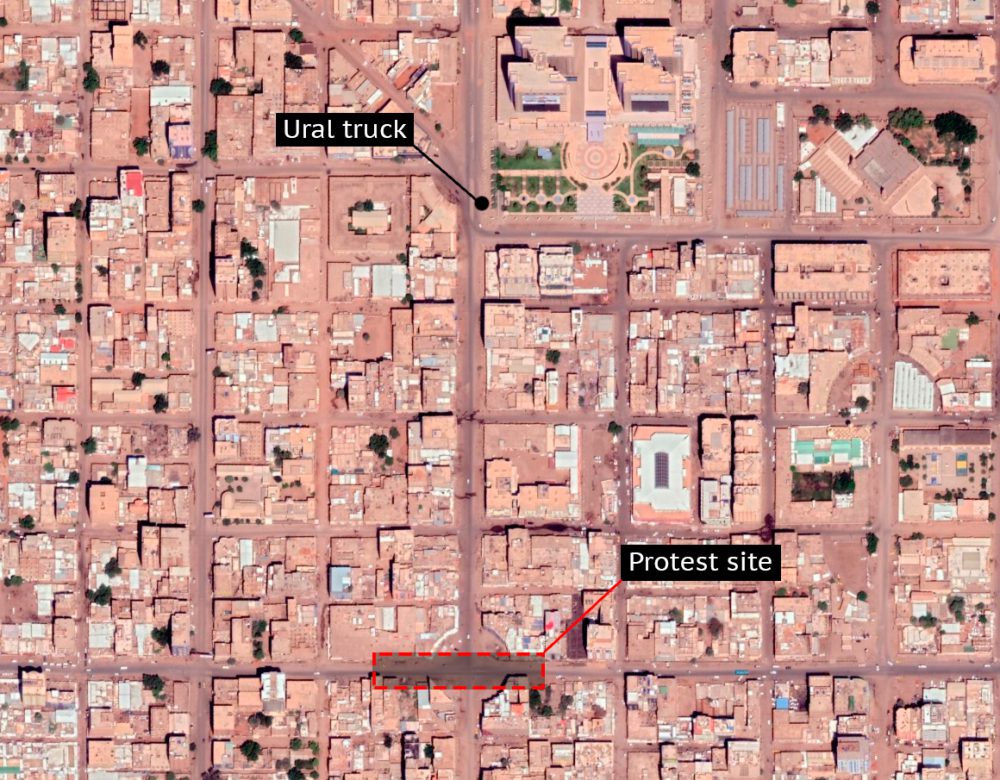
Of particular note is an unusual windshield of the truck:

We believe it has been armored and the armor is identical to a truck present in April 2018 at the graduation ceremony of the Central African Republic army’s 3rd Territorial Battalion at Berengo, CAR.
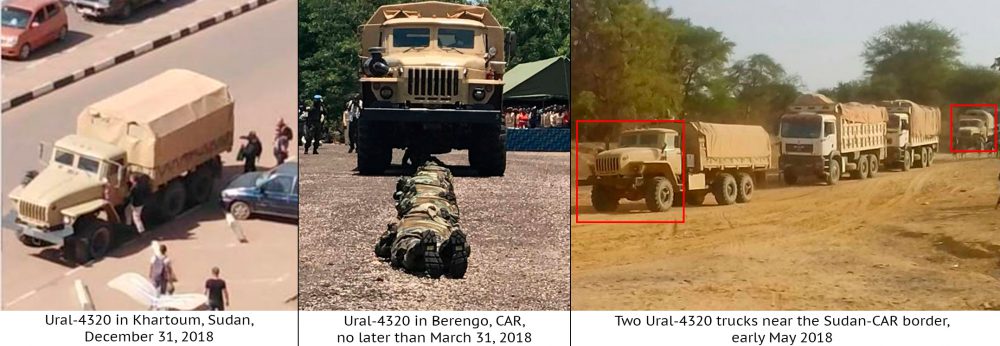
In early May 2018 identical up-armored Ural-4320 trucks were seen in a convoy of 18 vehicles which crossed the Sudanese border towards CAR at the Um Dafuq border crossing. The convoy went through the town of Birao, heading southwest, followed by local rebels. 4 days later, the convoy with 55 armed Russians was stopped by a group of rebels near the town of Ndele. Upon inspection, apart from the claimed humanitarian cargo (mainly a field hospital), arms and ammunition were found in the convoy. The rebels seized all the weapons apart from personal arms of the convoy guards and let the convoy pass through. After passing Kaga-Bandoro, the convoy split into two unequal parts in the town of Sibut: five trucks proceeded to Bangui, the capital of the Central African Republic, while the other 13 headed to rebel-controlled Bambari and Bria.
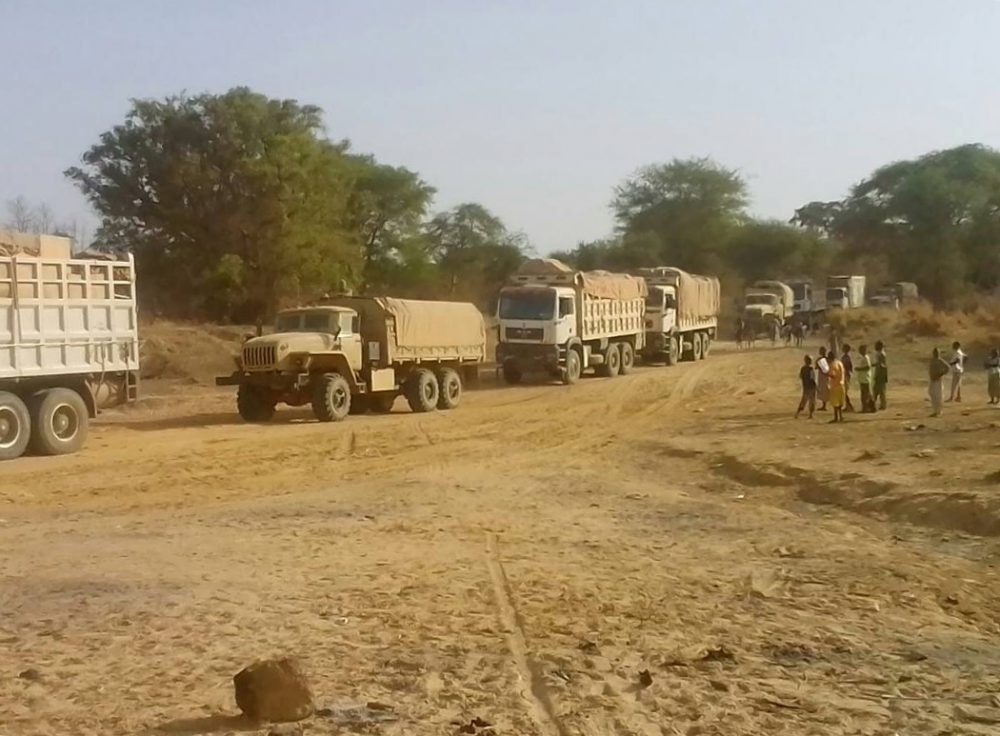
A photo of the convoy shows at least three Ural-4320 trucks. Up-armored windshields are clearly seen on the first two trucks

Russian mercenaries’ presence in Sudan was revealed back in December 2017, when a video was published showing a Russian-speaking operator training a group of likely Sudanese soldiers:
“Russian military experts” presence in Sudan was also confirmed by the country’s president Omar Bashir, who said during his meeting with Vladimir Putin on July 14 2018:
Omar Bashir
«Of course, there are positive shifts in the military-technical sphere and in military cooperation. We see big exchanges between specialists of Russia and Sudan. A big number of Russian specialists work in our country and this is why we highly praise the role that your country plays in preparing Sudanese military personnel.»
It is currently unknown how “Wagner PMC” operatives are involved in training the local NISS security service on suppressing protests. However, sources told a local publication “Sudan Tribune” that “Wagner” mercenaries were indeed working with the Sudanese military and security services. Similar information was reported by The Times. The publications’ sources refused to elaborate on the role of Russian mercenaries in suppressing the Sudanese protests.
